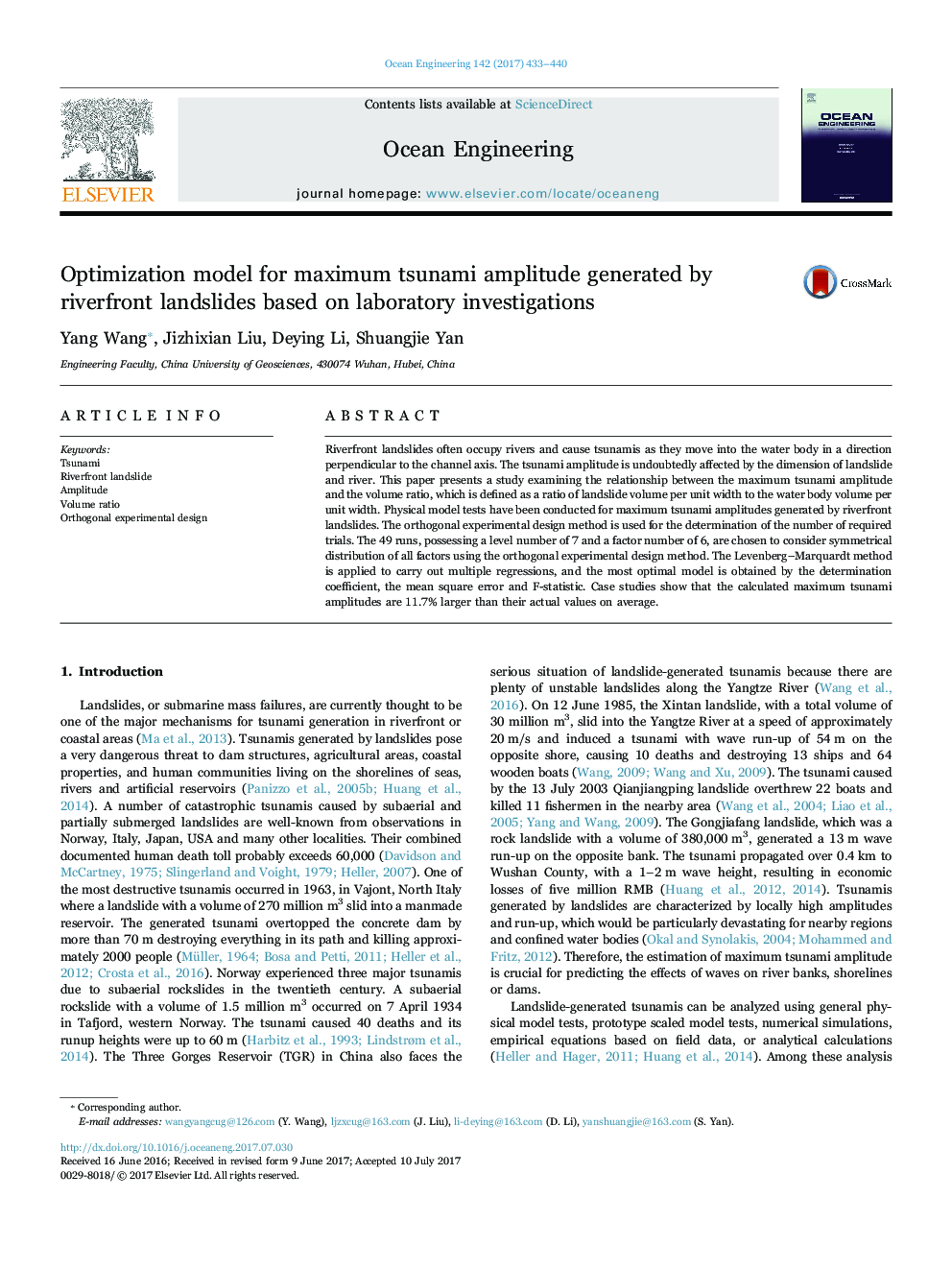| Article ID | Journal | Published Year | Pages | File Type |
|---|---|---|---|---|
| 5474381 | Ocean Engineering | 2017 | 8 Pages |
Abstract
Riverfront landslides often occupy rivers and cause tsunamis as they move into the water body in a direction perpendicular to the channel axis. The tsunami amplitude is undoubtedly affected by the dimension of landslide and river. This paper presents a study examining the relationship between the maximum tsunami amplitude and the volume ratio, which is defined as a ratio of landslide volume per unit width to the water body volume per unit width. Physical model tests have been conducted for maximum tsunami amplitudes generated by riverfront landslides. The orthogonal experimental design method is used for the determination of the number of required trials. The 49 runs, possessing a level number of 7 and a factor number of 6, are chosen to consider symmetrical distribution of all factors using the orthogonal experimental design method. The Levenberg-Marquardt method is applied to carry out multiple regressions, and the most optimal model is obtained by the determination coefficient, the mean square error and F-statistic. Case studies show that the calculated maximum tsunami amplitudes are 11.7% larger than their actual values on average.
Related Topics
Physical Sciences and Engineering
Engineering
Ocean Engineering
Authors
Yang Wang, Jizhixian Liu, Deying Li, Shuangjie Yan,
